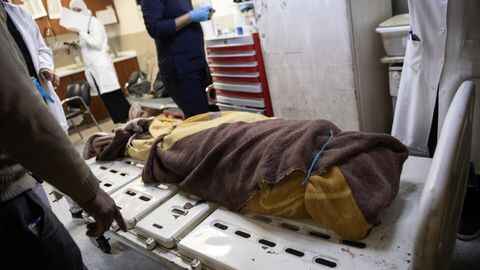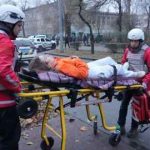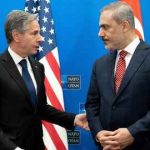According to the Syrian Network for Human Rights, during the civil war, regime forces tortured and imprisoned at least 1.2 million Syrians.
Thousands of people were tortured at hundreds of facilities outside of Sednaya prison during the Baath regime’s control in Syria.
The deposed Baath regime is said to have killed and tortured thousands of people since the uprising started in March 2011. The unreported figures, however, are expected to rise to tens of thousands.
The Syrian Network for Human Rights (SNHR) claims that during the civil conflict, regime forces tortured and imprisoned at least 1.2 million Syrians.
International human rights organizations claim that despite the regime’s announcement of more than 20 alleged amnesty judgments during the conflict, Syrians were still being held in detention.
The fact that inmates were killed via torture is emphasized in a number of publications from foreign organizations.
The Anadolu Agency has collated information about torture facilities and practices used by the 61-year-old Baath government.
The regime’s torture facilities were classified as secret, unofficial detention facilities, military prisons, civilian jails, and security unit interrogation facilities, per an exclusive SNHR report for Anadolu.
Nearly every province in the nation had more than 50 of these centers.
Interior Ministry prisons
They began by rescuing inmates, the majority of whom were opposition members, in cities overrun by forces who overthrew the Baath administration.
Inmates were released from large jails, including as Suwayda Central Prison, Homs Central Prison, Aleppo Central Prison, Hama Central Prison, and Adra Central Prison near Damascus.
However, inmates at Tartus and Latakia’s major jails are still waiting to be released.
Crime hotspots
In military prisons run by the Defense Ministry, tens of thousands of victims endured years of abuse.
Al-Balloon and Tadmur in Homs and Sednaya, Mezzeh, and Qaboun in Damascus were particularly notable as sites of extreme torture. There were numerous captives who were never heard from again.
The dictatorship was overthrown by opposition parties, and inmates in Kabun and Mezzeh were also released.
The Defense Ministry’s military intelligence divisions oversaw Mezzeh prison, which was situated at the military airfield in the Mezze neighborhood of Damascus.
Unofficial, covert detention facilities
Although they were essentially hidden, there were also facilities where the regime imprisoned its opponents.
The establishment of these covert prison facilities was intended to carry out even more brutal forms of torture, according to SNHR and other human rights organizations. There was no prospect of survival for those who found themselves in these torture dens.
The Fourth Division, led by Maher Assad, Assad’s brother, was in charge of these establishments.
The dictatorship also converted homes, villas, and stadiums into prison facilities at the beginning of 2012. Deir Shmeil Camp in northwest Hama was one such establishment.
Torture and detention facilities
Regime-affiliated security forces were also actively involved in running detention and questioning facilities.
The four primary intelligence services that made up the security apparatus were the Air Intelligence Directorate, the General Intelligence Directorate (often referred to as “state security”), the Political Security Service, and the Military Intelligence Service (also known as “military security”).
There were at least 20 branches of the Military Intelligence Service, which had the biggest network in the nation.
While the General Intelligence Directorate had six main offices in Damascus, the Political Security Service had branches in the majority of the provinces.
After the Military Intelligence Service, the Air Intelligence Directorate came in second in terms of detentions. The directorate had branches in almost every province, although it was most active where there were military airports.
The Syrian National Security Bureau, which was founded in 2012, was given responsibility for these units. After a few days, those imprisoned in these branches were usually moved to the major centers in Damascus, where they would remain for years.
Security forces oversaw over 45 detention facilities throughout the nation, including 18 in Damascus.
72 distinct techniques of torture
The Baath dictatorship used 72 forms of torture, including sexual, psychological, and physical violence, according to the SNHR investigation.
Additionally, the dictatorship violated fundamental human rights by subjecting captives to solitary confinement and forced labor.
Physical torture included pouring boiling water on victims’ bodies, simulating drowning by submerging heads in water, electrocuting individuals with electric batons, and placing them naked on electrified metal chairs. Other inhumane practices involved melting plastic bags onto bodies, extinguishing cigarettes on the skin, and burning fingers, hair, and ears with lighters.
Additionally, the dictatorship employed cruel techniques such using pliers to rip off fingernails, tearing out hair, using sharp instruments to amputate body parts like genitalia and ears, and driving nails into delicate places like palms, tongues, and noses.






